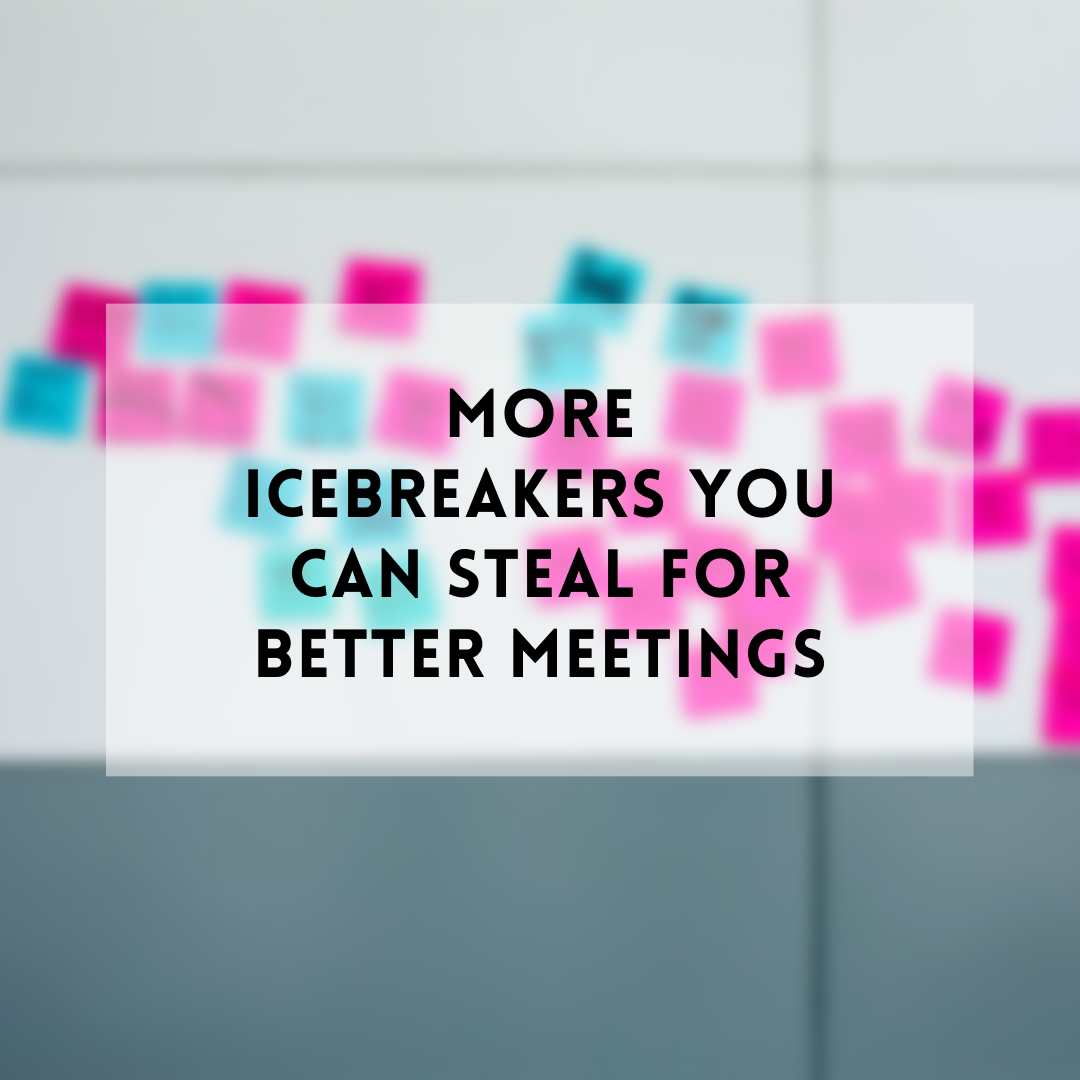More icebreakers you can steal for better meetings
What helps start a hard meeting on a positive note? How do you encourage team members to think bigger?
The answer: icebreakers. Or should I say, the answer is still icebreakers?
Last year I wrote an article about the power of this misunderstood tool to impact group attitudes and outcomes, and I was not prepared for the response.
My social channels blew up with notifications, other publications picked up the piece, and my Medium stats went on the fritz, all over an article that I thought had a good chance of bombing.
I mean, let’s face it, icebreakers get a bad wrap for being corny, fluffy and old school. But after the overwhelming response I received last year, I feel pretty confident in saying that this is a tool people actually want to use!
Now that we’re reprograming how we think about icebreakers, I thought I’d share a few more scenarios in which they’re particularly helpful. Feel free to copy and paste them into your next session!
When you need teams to engage in collaboration and forward thinking
Prompt: “In one word, how do you feel? In one word, how do you want to feel at the end of our time together?” Capture the words in a visible place in the room.
Why it works: It asks team members to take ownership over creating their future. While it acknowledges how they’re feeling coming into the day, it shifts the focus to what lies ahead. I like to use this to kick off strategic planning sessions and workshops where team-building is central because it encourages the team to start imagining future states. Getting them in the right mindset to aspire toward a different reality helps them to take ownership over the creation of a future they’re invested in.
When you’re entering a session that will require intense work
Prompt: “What’s one thing you do to reduce stress in your day-to-day life?”
Why it works: This icebreaker is great for when your team is about to embark on some really challenging work, whether you’re in an annual planning meeting or day 3 of a multi-day workshop. These intensives can be stressful for people, so the goal here is to ask them to think in advance about how they like to calm themselves down when they’re stressed. The hope is that they’ll more easily reach for that tool if/when they feel stressed during a session (e.g., taking a few slow sips of tea, stretching, taking deep breaths). And hey, we can all benefit from hearing different stress-reduction techniques as inspiration for our own wellbeing.
When you’re leading a virtual workshop among team members of the same title/level
Prompt: “What are you wearing on your feet?” (ask them to show the group if they are comfortable with it!)
Why it works: Okay, I know this one is kind of goofy, but bear with me. I especially like using the prompt for virtual workshops because this detail is usually a mystery when dialing in from home. That said, the last thing I want to do is make a junior-level employee feel awkward about sharing their footwear in front of a VP (and vice versa), so I only employ it when I’m working with a group that already has a good rapport and consists of team members who have similar titles/levels. It’s a fun and lighthearted way to kick off the workshop with humor and playfulness.
When you need to break the ice among a group of people who don’t know each other very well
Prompt: “What’s your favorite morning beverage?”
Why it works: This question is simple, which means it really only requires a simple answer. The strength in this icebreaker is that it asks people to share some personal information without getting too intimate or forcing vulnerability. This can be a nice way to create some dialogue among people who aren’t that familiar with one another (without asking them to overshare). Here are some recent examples that illustrate how this can create a bit of connection: during an international meeting, a team member in India shared the ingredients and process of making his morning Chai. During another meeting, a creative shared that she’d recently embarked upon an experiment with Athletic Greens. In both scenarios, we walked away having learned a little more about that person. This is critical because humanizing one another is important for collaboration and cooperation.
Want to test these out? A quick reminder on best practices:
Demo your response to the group first (they’ll follow the facilitator’s lead)
Call on people to keep things moving
Don’t be afraid to adjust your prompt based on the natural flow of conversation and the team’s vibe
When you employ these prompts, I think you’ll find that your teams become more engaged, present and collaborative during your sessions. And who couldn’t use more of that?
If you missed my initial post on icebreakers – the one that started it all – here it is, in case you’re curious. And here’s another bonus post I added shortly after.
